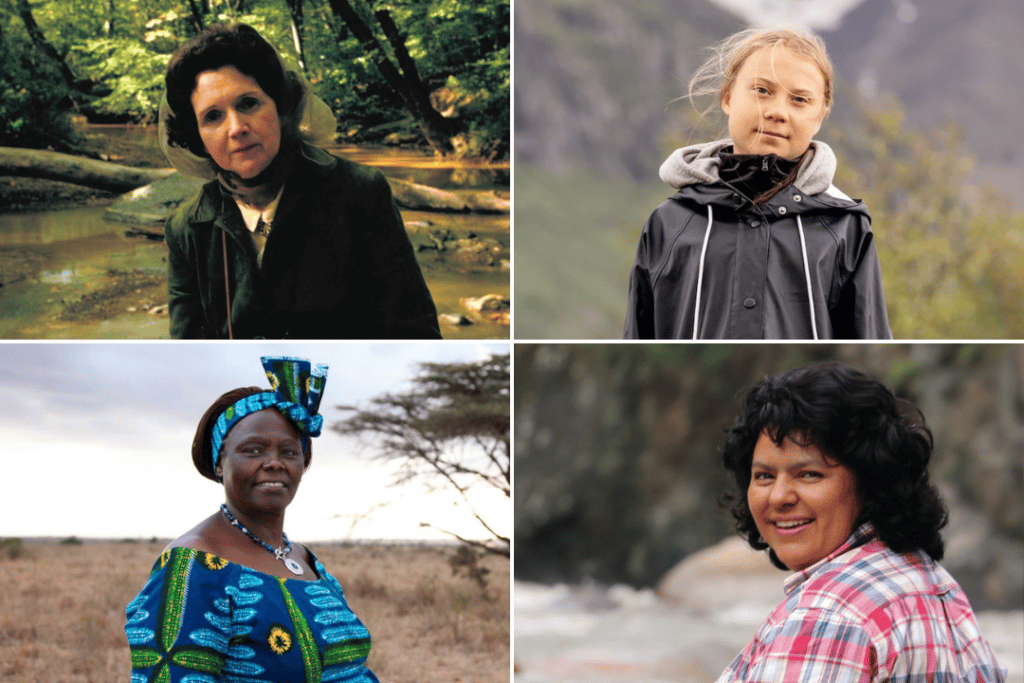“We are going to drift back to the dark ages where witchcraft and witches reign”.
These were the words spoken by Dr. Robert Metcalf, vice-chancellor of the University of California, in 1963. The “witch” he spoke of was Rachel Carson, who is now widely recognised as the pioneer of modern-day environmentalism. Carson triggered one of the largest global environmental movements in history and forever changed the face of the global environmental landscape.
In 1962, Carson debuted her most famous book, Silent Spring, and sent the world into a frenzy through her documentation of the environmental and human harm caused by pesticides. Arguably the most important environmental book of the 20th century, Silent Spring led to a presidential commission that endorsed Carson’s findings, and ultimately spurred the banning of the pesticide, DDT, and the creation of the US Environmental Protection Agency.
Women have been the lifeblood of the environmental movement, their legacy is embedded in leading science, global environmental policy, and earth-spanning advocacy.
Yet, throughout history, women environmentalists, activists and scientists have been systematically silenced, sidelined, scorned, dismissed, and belittled. Their contributions are erased from history books. Their names missing from scientific literature. Their faces absent from policy dialogues.
In 1856, Eunice Foote made a remarkable discovery about greenhouse gases, publishing a paper demonstrating that carbon dioxide and water vapour absorbed heat. She hypothesized that changing amounts of carbon dioxide in the atmosphere would alter the climate. Her published works were the first known publication in a scientific journal by a woman in the field of physics.
That same year, Foote sat quietly in the audience at an American Association for the Advancement of Science (AAAS) meeting in New York and listened as a man named Joseph Henry, secretary of the Smithsonian Institution, presented her work on her behalf.
Henry, unfortunately, failed to recognise or communicate the groundbreaking implications of Foote’s work. Foote, and her work, fell into obscurity.
Three years later, the Irish physicist, John Tyndall, published a report that ‘discovered’ the warming potential of carbon dioxide and water vapor. For the next century and a half, the world celebrated and remembered John Tyndall as the person who discovered the warming potential of carbon dioxide —despite his findings coming years after Foote.
It wasn’t until 2011, when geologist Raymond Sorenson happened upon an account of Foote’s work, that Foote was able to receive credit for her discovery – 123 years after her death.
And so goes the story that women are well familiar with.
All over the world, and to this day, women and girls are denied agency in environmental decision-making, they are locked out of key environmental forums, hidden from policy mechanisms, denied access to leadership opportunities, and remain unacknowledged for their critical role in shaping the environmental architecture of the last century.
Today, women bear the brunt of the consequences of climate change. In fact, 80% of people displaced by climate change are women.
Structural biases and socially constructed roles place an overwhelming burden of unpaid care, domestic duties, and agricultural production on women, increasing women’s vulnerability, exposure to, and preparedness for climate-related events. This rift is more pronounced in less economically developed regions where women are highly dependent on local natural resources for their livelihood and often have unequal access to resources.
For example, women and girls collectively spend 200 million hours per day collecting water for their families and communities. This burden is heightened in times of climate crisis, such as drought, which increase the distance that women must walk to collect water (and other resources).
Climate change is a “threat multiplier”, and, in times of crisis, exposes women to increased risks of violence, sexual and domestic abuse, trafficking and conflict.
In the wake of the 2004 tsunami, Oxfam found that surviving men outnumbered women by almost 3:1 in Sri Lanka, Indonesia and India. Similarly, in Vanuatu, there was a 300% increase in new domestic violence cases after two tropical cyclones hit Tafe Province in 2011.
Women are both the most heavily impacted by environmental crises, and the most invisible in the decision-making and leadership mechanisms that address environmental issues.
Across all sectors of society, women’s representation is not an option, but a necessity. There is no environmental solution without the voices, minds and power of women, particularly rural and indigenous women.
Despite the structural and insidious gender inequities that exist across the world – and against all odds – women are overcoming the barriers that have sought to prevent them from meaningfully and fully contributing to society.
In 2004, Wangari Maathai became the first African woman and the first environmentalist to win a Nobel Peace Prize. She founded the Green Belt Movement, mobilizing Kenyan women and children to plant more than 30 million trees, and inspiring the United Nations to launch a campaign that has led to the planting of 11 billion trees worldwide.
Throughout the 1990’s and 2000’s, Berta Cáceres rallied her fellow indigenous Lenca people of Honduras and waged a campaign that successfully pressured the world’s largest dam builder to pull out of the Agua Zarca Dam. She was assassinated in her home in 2016.
From 2010 until 2015, Christiana Figueres built the global climate change negotiating process, which led to the 2015 Paris Agreement.
In 2018, 7-year-old Licypriya Kangujam campaigned to curb high pollution levels in India and make climate-change literacy mandatory in school. She is the youngest climate activist to address world leaders at a United Nations Climate Change Conference.
In 2018, at 15 years old, Greta Thunberg set off one of the largest movements in human history, mobilising millions of young people to raise their voices for climate action.
This month, Murrawah Johnson, Serena Thompson and Monique Jeffs, leaders of the First Nations youth-led activist group, Youth Verdict, made legal history, winning a landmark case to prevent the largest coal mine in Queensland.
For each of these incredible women, there are millions more that stand in the shadows of the environmental movement.
We would do well to remember their names and their legacy.


